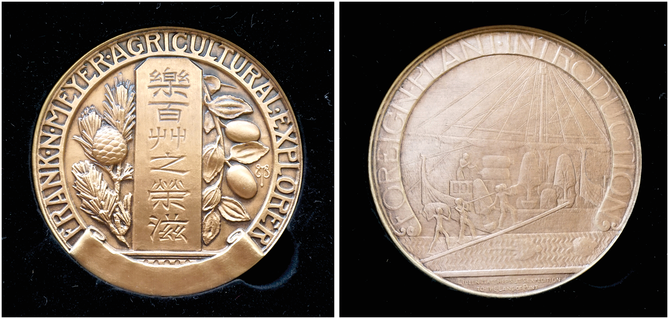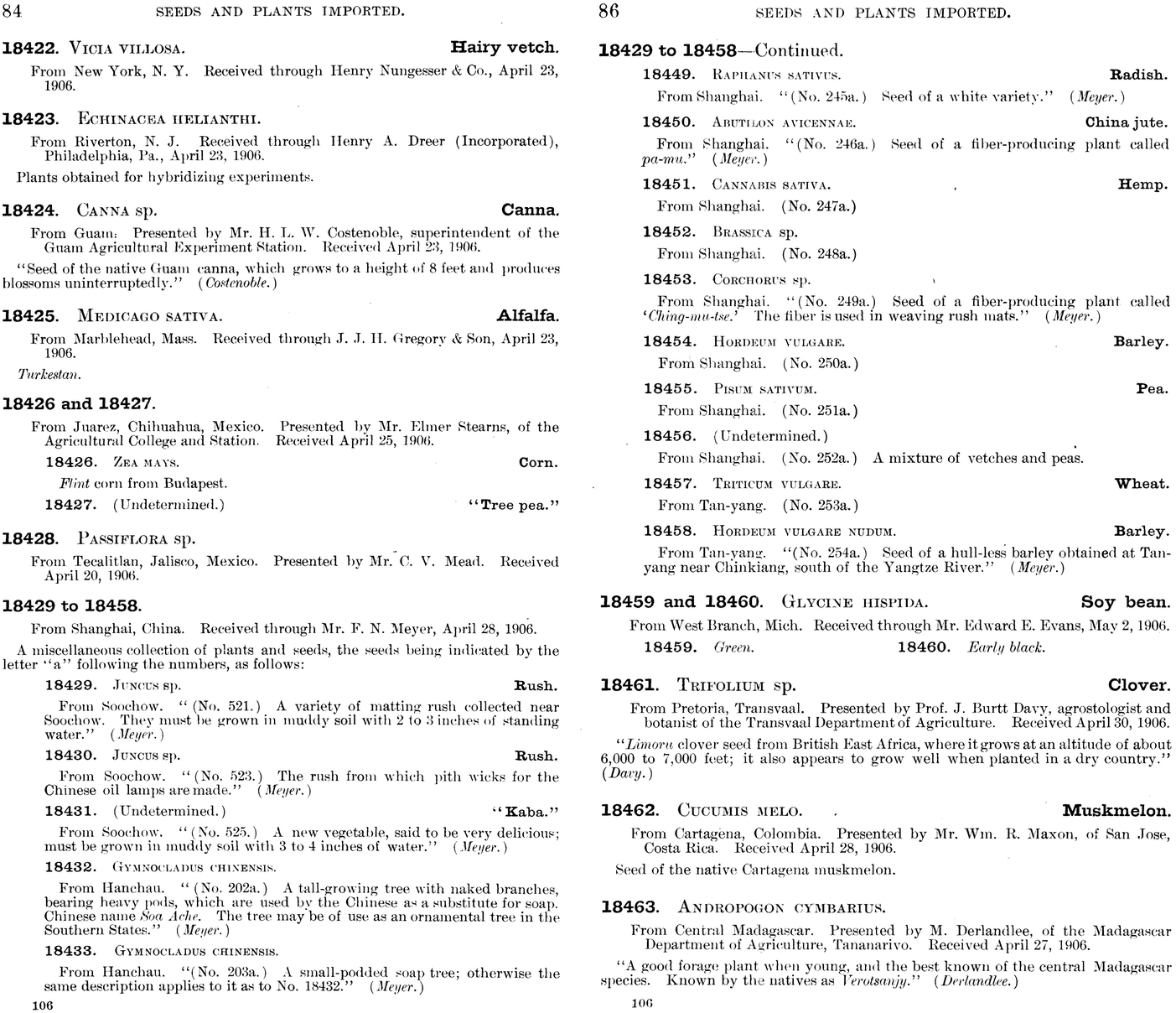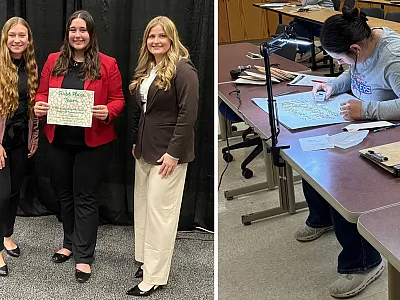Plant Exploration—the ‘Why’ of the Frank N. Meyer Medal

In March each year, CSSA accepts nominations for awards that acknowledge outstanding contributions, including the Frank N. Meyer Medal for Plant Genetic Resources. What were Meyer’s contributions to American agriculture, and how did this award start? Both answers tell a unique story in our U.S. agricultural heritage.
Frank Meyer (born Frans Nicholas Meijer) was a Dutch-American horticulturalist hired by the USDA in 1901 at the Santa Ana, CA Plant Introduction Station. The USDA Office of Seed and Plant Introductions, led by David Fairchild, was initiated in 1898 to augment U.S. agriculture with cultivated plants collected around the world. Fairchild hired Meyer in 1905 to conduct plant explorations in central and eastern Asia, primarily in China. Meyer collected more than 2,500 seed and propagules of crops, nut and fruit trees, and horticultural specimens. Examples are listed in Figure 1.
Meyer conducted four major collection trips over 12 years between 1905 and 1918. He traveled to China and then Manchuria and eastern Siberia between 1905–1908. Travel in these countries, was arduous, primarily using animal-powered carts, and packing the collected material for the long voyage to the USA was a meticulous process to preserve the propagules. The second expedition of collections was in Europe, Russia, and China between 1909 and 1912. Meyer continued collecting in Russia and China or the third expedition between 1913 and 1915. His ill-fated fourth and final expedition to China stated in 1916 and ended with his untimely death by drowning in the Yangtze River in 1918.
While the original Plant Introduction (PI = Plant Inventory) accessions collected by Meyer are mostly no longer available through GRIN Global, the genetics of his 2,500 plant introductions live on in U.S. agriculture with the extensive distribution of Meyer’s collected seed and propagules by the USDA. One of his most famous introductions is the Meyer lemon, still available from commercial nurseries.
Creation of the Medal
In his will, Meyer bequest a sum of $1,000 to his colleagues in the Plant Introduction office “to be used for some outing or entertainment for them.” The Plant Introduction staff voted unanimously to use this bequest to create a medal honoring Meyer to award meritorious contribution to plant introductions. The American Genetics Association agreed to present the award, first given in 1920. In 1983, the award duties were turned over to CSSA, and they are now administered by its Plant Genetic Resources Division (C-8).
The obverse side of the medal is a fruiting branch of Chinese jujube and a cone-bearing branch of white-barked pine. The inscription in the center, in Chinese script, reads “In the glorious luxuriance of the natural plants he takes delight” from Chi K’ang poem of the Tang Dynasty. The reverse of the medal depicts Egyptian Queen Hatshepsut’s plant expedition in 1570 B.C.
The Frank N. Meyer Medal for Plant Genetic Resources has been awarded to 79 plant genetic resource heroes over the last 105 years. Nominees can be recognized for outstanding contributions to the exploration and collection of plant genetic resources, evaluation of plant genetic resources, research on the preservation of plant genetic resources, maintenance of plant genetic resources, and administrative foresight and support of national or international plant genetic resource programs. Past recipients of this medal are listed under this award at crops.org/awards/search (or via this direct link: http://bit.ly/3M8zza6).

Dig Deeper
For further reading and to view the primary reference for this article, see Frank N. Meyer: Plant Hunter in Asia by Isabel Shipley Cunningham (1984; Iowa State University Press).
For an introduction to the history of the U.S. plant introduction program and early plant collectors, including links to original films, check out The USDA Plant Introduction Program by K.A. Williams and G.M. Volk, available from the Grin-U site at https://grin-u.org/ (or direct link at http://bit.ly/42T69mm). The USDA continues to fund plant explorations through its Plant Exchange Office and the crop-specific Crop Germplasm Committees.
Text © . The authors. CC BY-NC-ND 4.0. Except where otherwise noted, images are subject to copyright. Any reuse without express permission from the copyright owner is prohibited.











